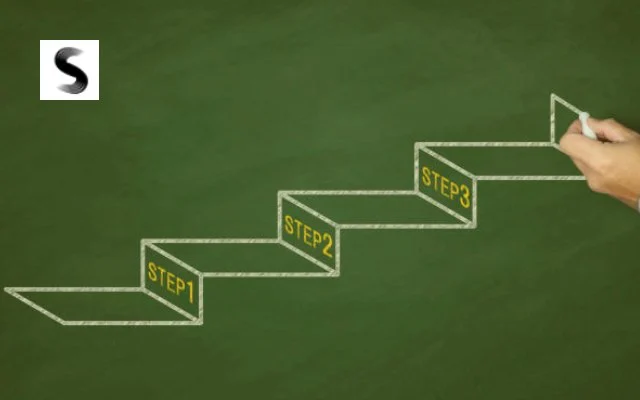Have you ever heard the proverb, “Third time’s a charm?” That is 100% correct based on my personal WordPress experience.
A significant portion of the internet is powered by the well-liked content management system, yet it may be tricky to utilize. Here’s my story of beating WordPress after three tries.
First Try: Overwhelmed and Frustrated
Venturing into the vast world of WordPress was initially overwhelming. My goal was to build a website, and so I dived into the pool of endless possibilities that WordPress offered. I spent hours customizing themes, installing many plugins, and trying to perfect my site. But instead of the functional, user-friendly website I’d hoped for, I was left with a sluggish site that needed more consistency.
Understanding WordPress
The first thing I discovered is that, although being user-friendly, WordPress requires some knowledge of its features.
It helps you balance aesthetics, performance, and usability. Too many plugins and heavy themes can slow your website, reducing its appeal to users and search engines.
The Trouble with Themes and Plugins
In my quest for the perfect website, I installed numerous plugins, all promising enhanced functionality and optimization. I eventually realized that this was a formula for disaster. My website’s speed took a significant hit, and the various plugins I installed started conflicting.
Second Try: Disappointed and Discouraged
I collected myself after my first failed attempt and resolved to try one again. I chose a different theme this time, focusing more on optimization and less on excessive functionality. I installed only essential plugins and prioritized speed. Everything appeared to be going as planned for a while. But then, my theme started clashing with some of the plugins, and I was left once again with a less-than-optimal website.
The Quest for Optimization
I learned that optimizing a WordPress website is not merely about choosing a theme and installing plugins. It’s about understanding how different site elements interact and can impact your website’s overall performance.
The Plugin-Theme Conflict
Finding out that my chosen theme clashed with some plugins was a disheartening discovery. It meant that despite all my efforts, I still needed to achieve the balance I aimed for.
Third Try: Successful and Satisfied
I decided to give it another go since I didn’t give up. I chose a new strategy this time: simplicity. I chose a light theme, merely included the necessary plugins, and didn’t do any customizing.
Additionally, I concentrated on understanding, implementing, and following accessibility standards and best practices.

Embracing Simplicity
Adopting a more straightforward approach to my WordPress website made all the difference. Instead of being weighed down by heavy themes and conflicting plugins, my website could finally breathe. The result? Improved speed and performance and a more user-friendly website.
SEO Best Practices and Accessibility
Understanding and implementing SEO best practices and accessibility guidelines also significantly impacted my success. I optimized my site with descriptive titles and alternative text, making it more appealing to users and search engines.
Achieving Success
My third attempt at mastering WordPress was successful. By prioritizing functionality, speed, and optimization, I created a user-friendly, SEO-optimized website that I am proud of. My website’s performance improved significantly, and user feedback was overwhelmingly positive. The third time I was proved to be the charm, after all!
Tips for Conquering WordPress
From my experience, here are some tips that can help you conquer WordPress:
- Choose a lightweight theme: Themes are crucial to your site’s speed and performance. Opt for light, optimized themes that don’t sacrifice speed for aesthetics.
- Be selective with plugins: Only install the plugins you need. Too many can slow your website down and cause conflicts.
- Minimize customization: While customization can make your website unique, excessive changes can lead to inconsistency and functionality issues.
- Adhere to SEO best practices and accessibility guidelines: Make your website search engine friendly and accessible to all users.
- Enrol in a WordPress course: Knowledge is power. An online system can provide invaluable insights into WordPress’s workings.
The WordPress Community
Remember the WordPress community. They’re supportive, always ready to offer advice and share experiences. Connect, learn, and grow with them.
Conclusion
Mastering WordPress is not about finding the perfect theme or the most advanced plugins. Finding the ideal mix between usefulness, simplicity, and optimization is important.
It’s a learning process that calls for tolerance, tenacity, and trial and error. But it’s worth every effort when you eventually get it properly!
FAQs:
What is WordPress?
Popular content management tools like WordPress are used to create and maintain websites.
How can I optimize my WordPress website?
Optimizing your WordPress website involves:
- Selecting a lightweight theme.
- Installing only essential plugins.
- Adhering to SEO best practices and accessibility guidelines.
Is WordPress user-friendly?
WordPress is user-friendly but requires a basic understanding of its features to utilize its potential fully.
In what ways may I learn more about WordPress?
You may enroll in an online course or interact with the WordPress community to learn more about WordPress.
Can I customize my WordPress website?
WordPress allows customization, but it’s advised to keep it minimal to avoid functionality issues.
